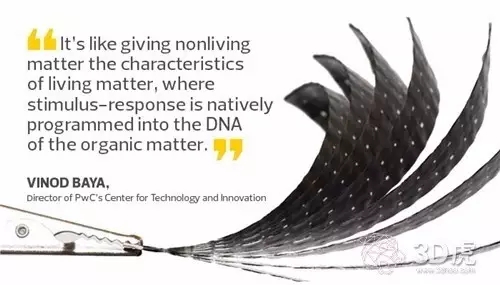Release date: 2017-01-16
 Recently, researchers at Harvard University used natural resources to 3D print objects that can move independently in the water. It is reported by researchers using moisture absorbent to absorb ink, the print push the 3D 4D art. The object produced by this ink can mimic the shape of flowers, petals, leaves, and exercise and produce a stress response.
It is understood that this research was jointly completed by Professor Hannifer A. Lewis, Professor Hansjrg Wyss of Harvard University's Weiss Bioinspired Engineering Research Institute, and research assistant A. Sydney Gladman. In the study, the choice of hygroscopic inks played a crucial role in the final success.
Previously, researchers used a variety of materials or induced motion through magnetic force to achieve simple shape changes. Now, the Harvard team's approach allows them to arrange cellulose fibers in the ink. Their latest project involves 3D printing can be converted tissue engineering scaffolds that can support cell growth. At this stage, water is the best medium because hydration is also used in biomedical and tissue engineering applications.

The researchers will then perform a series of experiments on the ink, including reversible shape changes, light and pH levels. At the same time, the researchers also studied materials with biocompatibility and conductivity, and proved the temperature reversibility of the system by introducing thermoreversible monomers.
In addition, Professor Lewis's lab set up a 3D printer that uses G-code programming to print the architecture in about 10 minutes. "By changing the 3D printing path, we were able to create a variety of shape-changing architectures," Gladman said. The 3D printing ink is a hydrogel embedded with rigid cellulose fibrils. By placing fine cellulose on a 3D printing bed, sufficient spatial expansion is created to immerse it in water, allowing scientists to control shape changes.
Currently, the latest frontier in the development of 4D printing is the printing of tissues and organs in a laboratory environment. “Before 4D printing became mainstream, researchers must improve their ability to accurately control responses, develop standards, performance certifications, and regulatory policies,†said Vinod Baya, director of the PricewaterhouseCoopers Technology and Innovation Center.
Source: 3D Tiger
Gas Generator,Nitrogen Generator,Gas Generator High Purity,Lab Medical Gas Generator
Guangdong Widinlsa International Co.Ltd , https://www.widinlsamachine.com